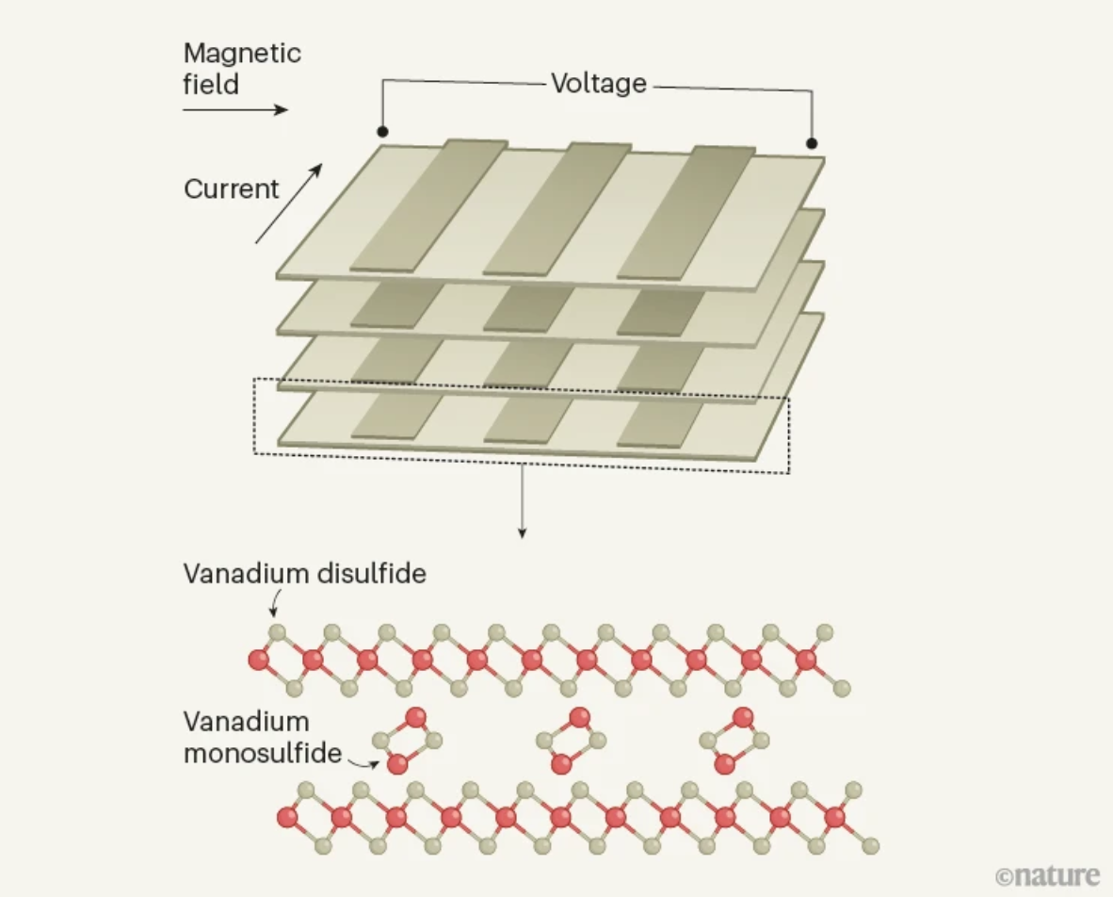An electrifying new material
An intriguing material developed by Prof Liu Zheng could open new avenues to synthesise novel materials with unique properties.

Image credit: Springer Nature Limited.
From super-tough fabrics to biodegradable plastics, novel materials with unique characteristics are opening the door to many futuristic applications.
Prof Liu Zheng of NTU’s School of Materials Science and Engineering and his team have developed a novel material with intriguing electrical properties.
Using a strategy known as the chemical vapour deposition method – a process commonly used to produce thin films –the scientists created ultrathin sheets of vanadium disulphide interspersed with ribbons of vanadium monosulphide.
Combining these materials resulted in a unique lattice with an unusual response to magnetic fields, different from conventional electrically conductive materials.
Typically, when a magnetic field is applied at right angles to an electric current running through a conductor, it generates a voltage potential that is perpendicular to both the electric current and the magnetic field – a phenomenon known as the Hall effect, discovered by American physicist Edwin Hall.
In striking contrast, the researchers observed that the voltage generated by the novel material was perpendicular to the electric current but in the same direction as the magnetic field. This effect was also observed at room temperature instead of ultra-low temperatures, where it might be expected to occur.
“Our results expand the current understanding of such materials and open new avenues to synthesise materials with novel physical properties,” says Prof Liu.
Find out more in “Heterodimensional superlattice with in-plane anomalous Hall effect”, published in Nature (2022), DOI:10.1038/s41586-022-05031-2.
The article appeared first in NTU's research and innovation magazine Pushing Frontiers (issue #22, August 2023).





.tmb-listing.jpg?Culture=en&sfvrsn=9b7345be_1)
.tmb-listing.jpg?Culture=en&sfvrsn=57e7d9a3_1)
.tmb-listing.jpg?Culture=en&sfvrsn=462ec612_1)